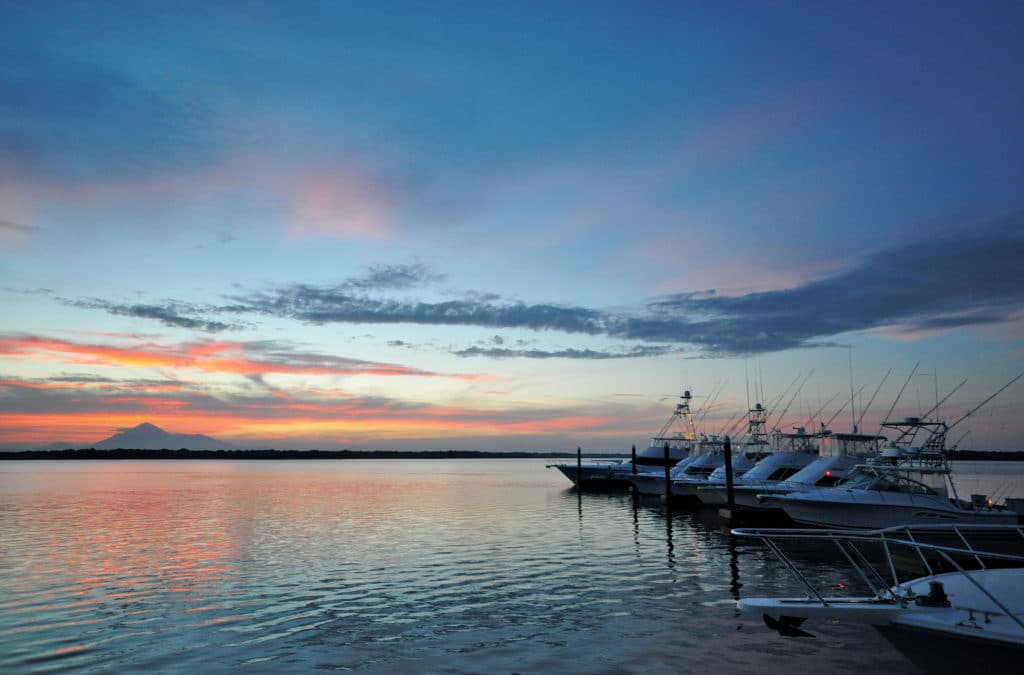
Panama and Costa Rica get tons of press for their red-hot fishing for both marlin and sailfish. To the north, Guatemala lives up to its reputation as one of the hottest sailfish destinations in the world year after year. Even El Salvador has come on strong in the last few seasons. But what about Nicaragua, sandwiched right there in the middle — it must offer some amazing sport-fishing opportunities, right? Those who know say, absolutely: Nicaragua could be the hottest billfish destination in Central America that you’ve probably never fished. It’s a matter of geography. Spin the globe (or your Google Earth app) to Central America and you will see why.
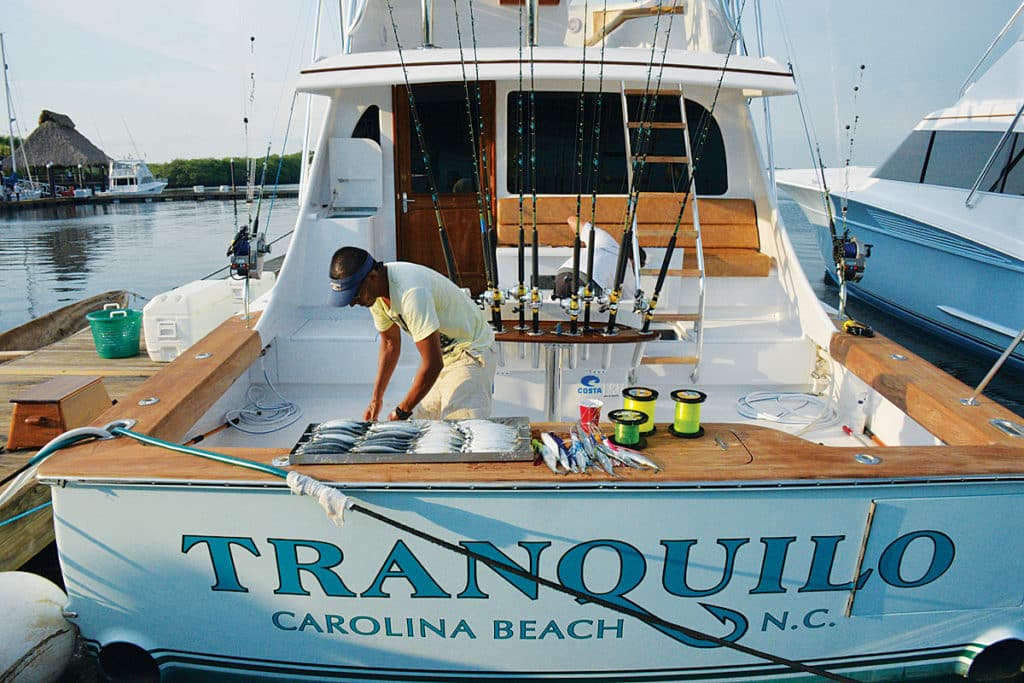
Looking South: San Juan del Sur
Set on the shoreline along a half-moon shaped bay, San Juan del Sur (SJDS) is a small seaside community that’s fairly typical of Central America. That laid-back lifestyle — and the promise of phenomenal fishing — first attracted Ken Cofer to relocate his 57-foot Spencer Tranquilo to San Juan del Sur in February 2012. “It’s a great place to fish from about May through October when the wind is onshore,” he says. “It seems like the fish don’t arrive until it starts to rain in Costa Rica. At times, the sailfish are only 3 to 5 miles off the beach, in as little as 300 feet of water.” Though he has since moved his base of operations to Marina Pez Vela in Costa Rica, Cofer has many fond memories of his time in SJDS and returns frequently.
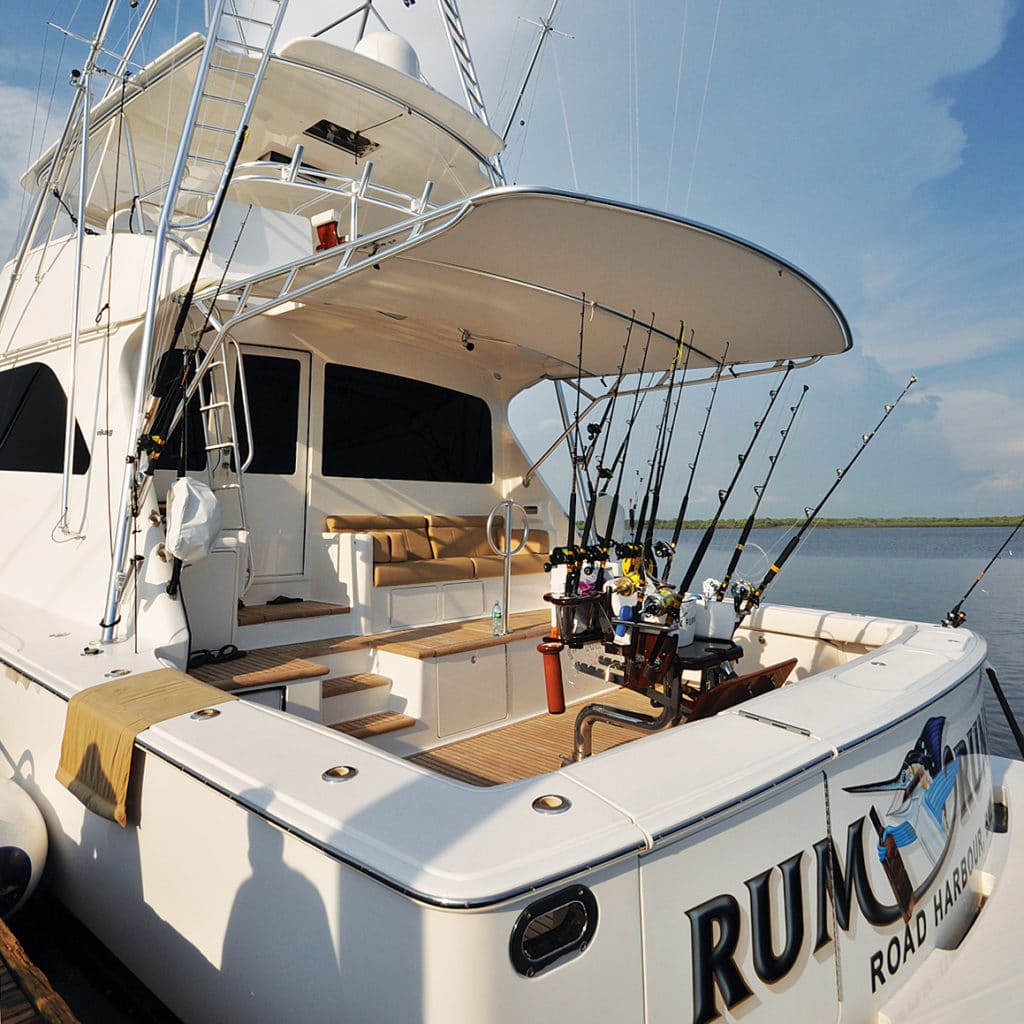
Capt. Joe Crawford has also seen great days off SJDS as captain of Carlos Pellas’ Rum Runner since 2003. “We’ve experienced 20-plus-release days just 12 miles offshore,” he reports. “Although the run to the shelf is about 50 miles from the bay, there are more subtle depth changes that hold sailfish, some marlin and all the dorado you want a lot closer to home.” Crawford also says that the area offers excellent fishing for roosterfish, a sentiment echoed by Cofer. These striped brawlers, with their comb-like dorsal fins, prowl the beaches and drop-offs and are usually targeted with a frisky live bait bridled to a stout circle hook. Most of the local charter boats will offer combination offshore/inshore trips, so it’s entirely possible to catch a few sails and then wrap up the afternoon chasing roosters in the surf.
Fishing the Area
As with any new destination, the learning curve can be steep. Off Nicaragua, the bite depends largely on the current. “I think the currents are the most important thing in deciding where and how to fish in the north and the south,” says Crawford. “It is very current sensitive in the south due to the large areas, with little or no structure to hold the bait, so the current really needs to be coming in from the south for San Juan del Sur and Mukul to work well. Up north, it’s all about the bait. In August, the bite has been on the west-facing edge the last four years, with the current predominantly pushing north to south.” Most everyone is pulling a spread of circle-hooked ballyhoo over dredges and squid daisy chains, with the new breed of artificial and mudflap-style dredges becoming very popular and productive. Thirty-pound tackle is the norm, but with the abundance of sailfish, it’s fun to scale down to 20 or even 12, keeping a heavier outfit handy in case a blue one shows up on a teaser.
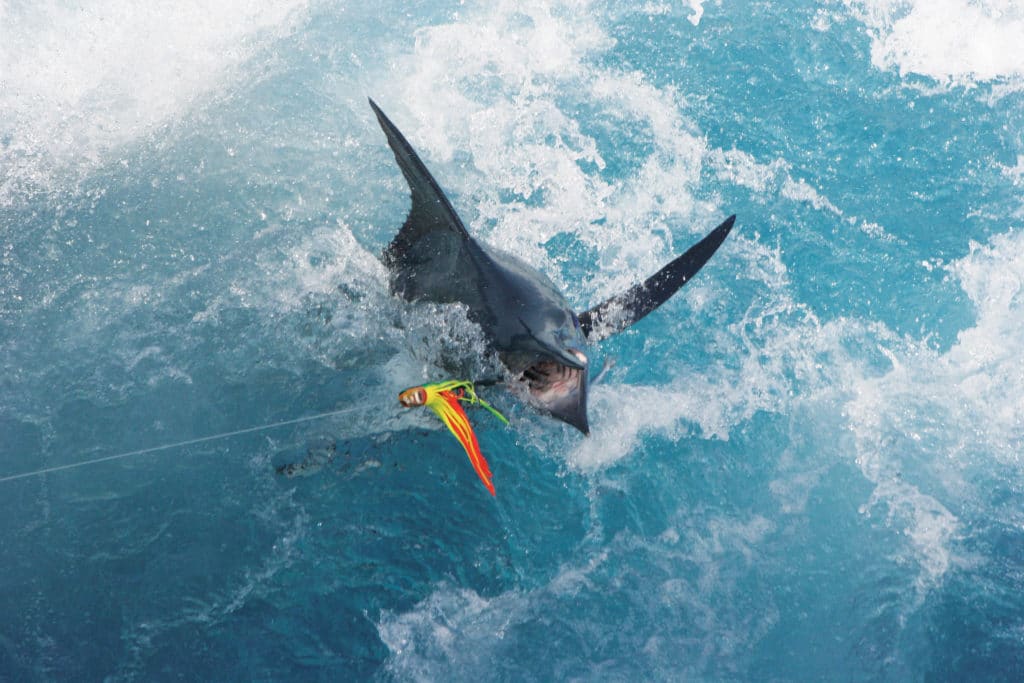
The subject of fish-aggregating devices or FADs is a popular and hotly contested one. According to my sources, there are currently no large recreational FADs deployed off Nicaragua as there are in Costa Rica and Panama. Local fishermen use simple FADs made of palm fronds and polypropylene rope, but these seldom last more than one season or a big storm. When asked about the use of FADs, Roberto Sandino, tournament director for the Flor de Caña International, said, “I have mixed feelings about them. If it’s catch-and-release, it lets the recreational fishermen have a good time at a reasonable distance from shore. But when the commercial fishermen use FADs, they cause a lot of damage to the fish populations — especially sailfish and dorado — from overfishing.”
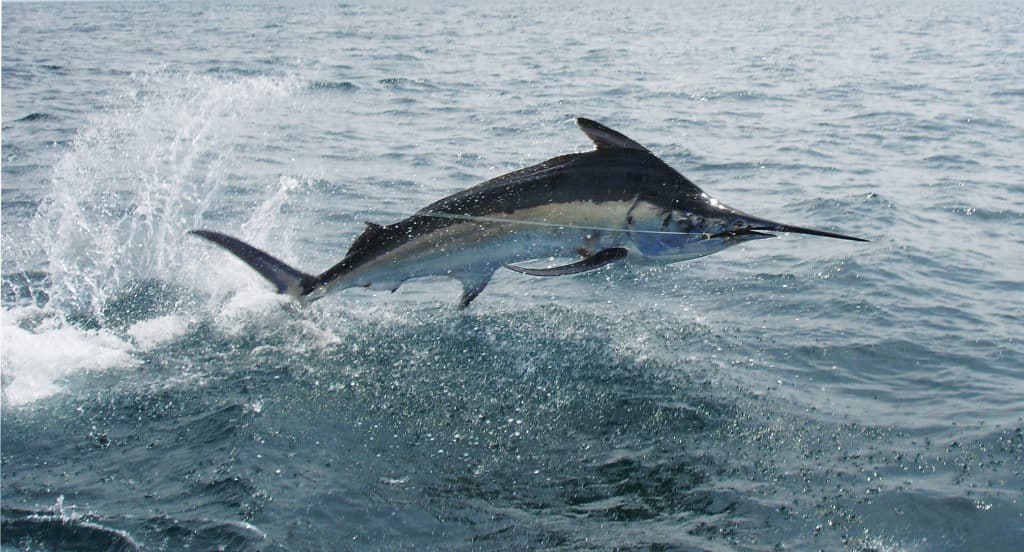
Center Stage: Puesta del Sol
Situated just outside the small town of Chinandega and in the shadow of the smoking San Cristóbal Volcano, Puesta del Sol offers one of the country’s best marina facilities. Accessible by a well-marked channel from the ocean, it has all the amenities that owners would expect from a world-class marina. It also hosts the Flor de Caña International Billfish Tournament each year. This tournament, celebrating its 14th anniversary in 2015, has arguably done more to promote Nicaraguan billfishing than anything else.
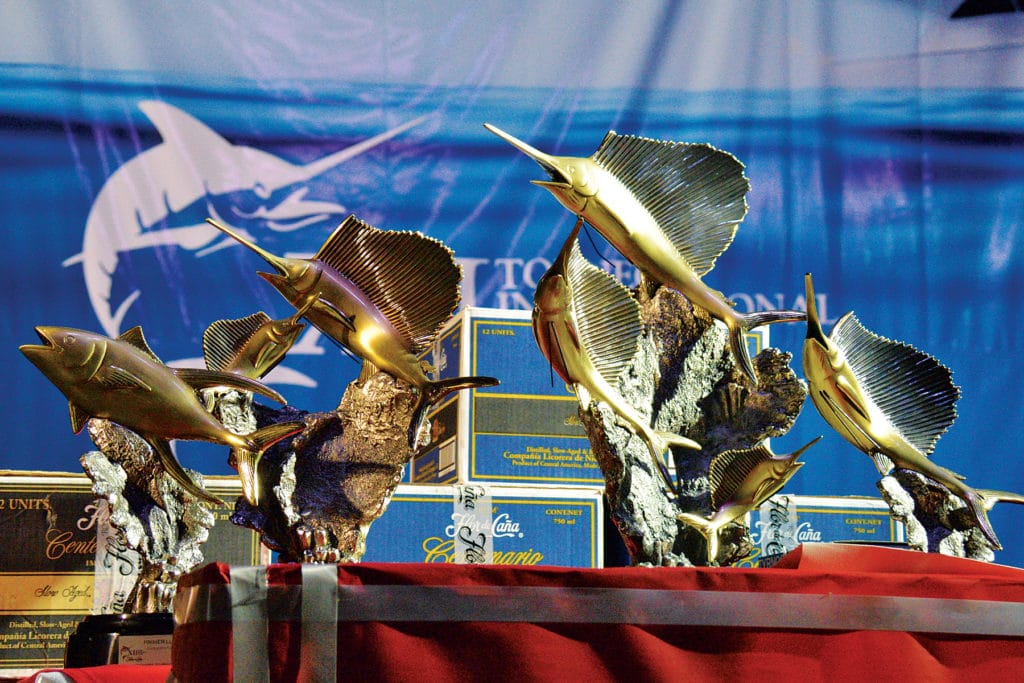
“Even a few years ago, it was more of a reason to party than to fish competitively,” Crawford says. “But these days, the tournament brings in boats from not just Nicaragua, but also El Salvador, Costa Rica, Guatemala and the United States. They use certified observers, and the prizes have also risen significantly. It’s been fun watching this group improve their skills and become world-class fishermen and also to see the younger generation become more involved in sport fishing.”
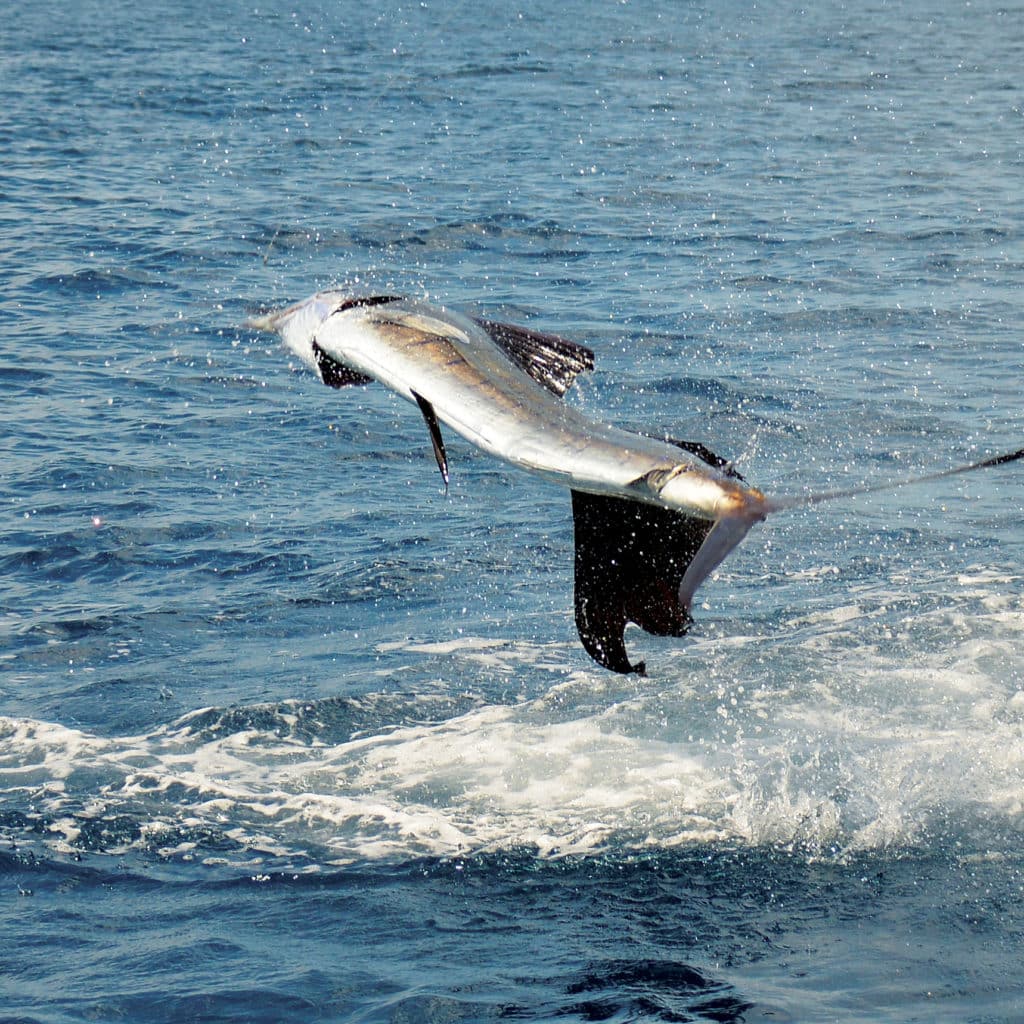
I fished this tournament in 2012 and 2013 with Capt. Bubba Carter on Tijereta. We were head-to-head with some of the best boats in the Pacific from start to finish, and it amazed me to see just how far the locals had progressed. A few still wanted to pull lures on heavy tackle — and consume enough rum to float a 31 Bertram — but most had made the transition to dredge fishing with circle-hooked ballyhoo, hands down the best way to rack up numbers on both blue marlin and the far more numerous sailfish. And while I missed the 2014 tournament, the 16 participating boats released 606 sailfish and five blue marlin over the course of three days, an average of 38 billfish per team. Xta-Sea, a Hatteras 60 GT owned by Alexis Chamorro and captained by John LaGrone, emerged victorious with 78 sailfish releases. Chamorro says, “We fished a few days prior to the tournament, and on one of those days, we released 51 sailfish — so we knew the fishing would be pretty good.”
LaGrone says, “The edge off Puerto del Sol is a great example of a fisherman’s paradise. It starts 40 miles out and extends north and west, with turns, drop-offs and hilltops similar to St. Thomas. It took me a few trips to really map out the 100-fathom curve and the different bowls and twists, and I still have plenty of places to look after eight years!” LaGrone has fished for Central American billfish since 1993, and he has run_Xta-Sea_ for Chamorro since 2007. “We always leave the dock with the anticipation of great fishing off Nicaragua,” he says. “We’ve had plenty of double-digit days on sailfish and others where we’ve released two blue marlin a day, too. I know for a fact that if we concentrated more on marlin hunting, our numbers would increase considerably.”
The Lap of Luxury: Guacalito and Mukul
Mukul Beach Golf and Spa shows just how far Nicaragua has come in recent years. This unique five-star resort has already claimed a host of awards since its February 2013 opening in Guacalito de la Isla. Pellas, a businessman and entrepreneur, developed Mukul (mukulresort.com) as a way to integrate luxury within the stunning landscape of his native country. With sweeping rainforests meeting the deep blue Pacific here, guests tend to agree with his vision.
Pellas, an IGFA Board of Trustees member, takes sport fishing -seriously and can often be spotted at -tournaments and marinas throughout Central America. And while Mukul does not have a marina at this time, it does offer some phenomenal sport-fishing opportunities. The resort has a new 31-foot Pursuit named The Spirit of Mukul, powered by twin 300 hp Yamaha outboards and fully rigged for both offshore and inshore action. The runs here average from 12 to 50 miles offshore for both sailfish and marlin. “The waters off Mukul are uncharted territory,” Pellas says. “The abundance of sailfish is astonishing and rivals those found in Costa Rica and Guatemala. And most of the time, you’re fishing by yourself.”
Why It’s Special
Xta-Sea owner Chamorro summarized his thoughts about sport fishing in Nicaragua by saying, “I believe Nicaragua is the best-kept secret in fishing right now. There are three reasons why it’s such an amazing destination. The first is that it’s completely virgin — Nicaragua is truly nature’s garden. Second, it’s the safest country in Latin America. And the third is that there’s a very wide range of accommodations. Whether you want to stay on the beach in a bungalow or a five-star resort like Mukul, there’s really something for everyone in Nicaragua.” He says that in 35 years of fishing, he’s barely scratched the surface in exploring these waters. “We have one of the longest coastlines in Central America here, and yet, there are very few boats fishing it,” he says. “It really is an incredible place!”
Getting There and Getting Around
Most visitors will fly into the Nicaraguan capital city of Managua from U.S. and European destinations. The Augusto C. Sandino International Airport (ACS) serves most destinations within the country. From there, options include taxis, car rentals or hiring a private car with driver. For the most part, the roads in Nicaragua are very good, well above the usual Central American standards. San Juan del Sur is also accessible by road from northern Costa Rica.
Puesta del Sol has several boats available for charters, both inshore and offshore, but be sure to book early as the selection of boats is limited. The marina also serves as a port of entry for visiting vessels. They will summon the appropriate customs and immigration officials to meet boats entering Nicaragua, but be sure to call ahead; the wait can be a long one, especially around tournament time, with several vessels clearing at the same time. Captains should bring a bagful of patience as well as their zarpe, or clearance from their previous port of departure.
Back Ashore
Not all the sights to see lie offshore. Nicaragua is known as the land of lakes and volcanoes, both of which are popular destinations. Lake Nicaragua, the largest body of fresh water in Central America, is home to several species of fish found nowhere else in the world. The historic city of Granada is nearby and is another great side trip for visitors to the country. Surfing is also popular in Nicaragua thanks to a remarkably consistent swell combined with some great beach and river-mouth breaks along the coast. American expat Lance Moss runs Surfari Charters (surfaricharters.com) where guests can fish, surf and sightsee all in one trip; if nothing else, his outgoing personality is guaranteed to be entertaining.
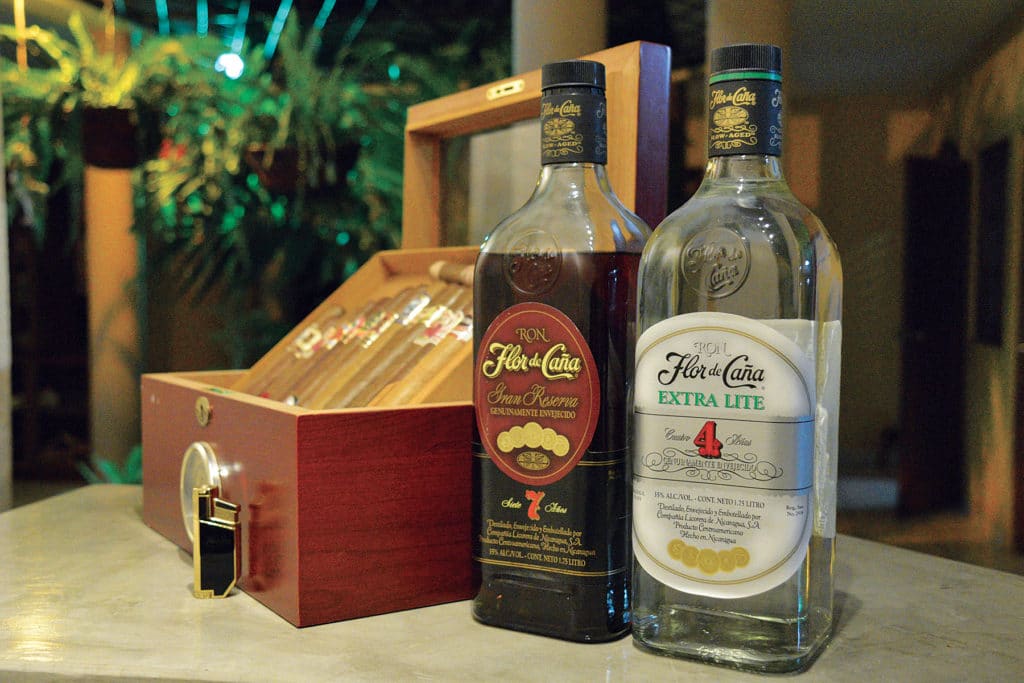
The Flor de Caña International Billfish Tournament is scheduled for Aug. 12-15, 2015, out of Puesta del Sol. It offers outstanding competition, terrific prizes and great parties back ashore, including a legendary poolside pig roast — not to mention plenty of Flor de Caña rum. Accommodations are limited, though, so be sure to register early if you’re interested in participating. Contact tournament director Roberto Sandino via email at [[email protected]] for more information.







